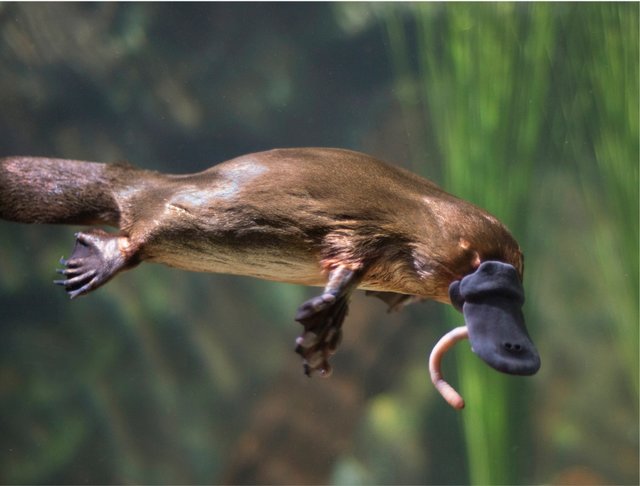Awormwrigglesonthebottomoftheriver.Ithidesunderapileofrocks.Neartheriverbank,aweb-footedhuntercomesoutofitsden.It’shungry.Itdivesintothe water.
Thewormcan’thide.Thehunterpicksuponitsmovements.Itfindsthewormeasilyandsnapsit up.
Thisplatypusdivesdownintothe water.

Thisplatypusfindsawormto eat.
Thispredatorisaplatypus.Itisanunusualmammal.Itsstrangecombinationoffeatureshelpsitsurviveinits environment.
PlatypusParenting
Aplatypuspaddlestotheriverbank.Sheusesherwebbedfrontfeet.Onland,shewaddlestoherden.Deepinsideherden,shedigsanewchamberwithherclaws.There,shelaystwosmalleggs.Shewarmsthemwithher body.
Twoweekslater,theeggshatch.Thebean-sizebabiesarehairlessandblind.Theyarealsohungry.Themotherplatypusfeedsthemmilkfromfoldsinherskin.Whentheycanswimandeatbythemselves,theyarereadyforlifeontheir own.
Platypuseslivein burrows.

Platypuseggsare small.
